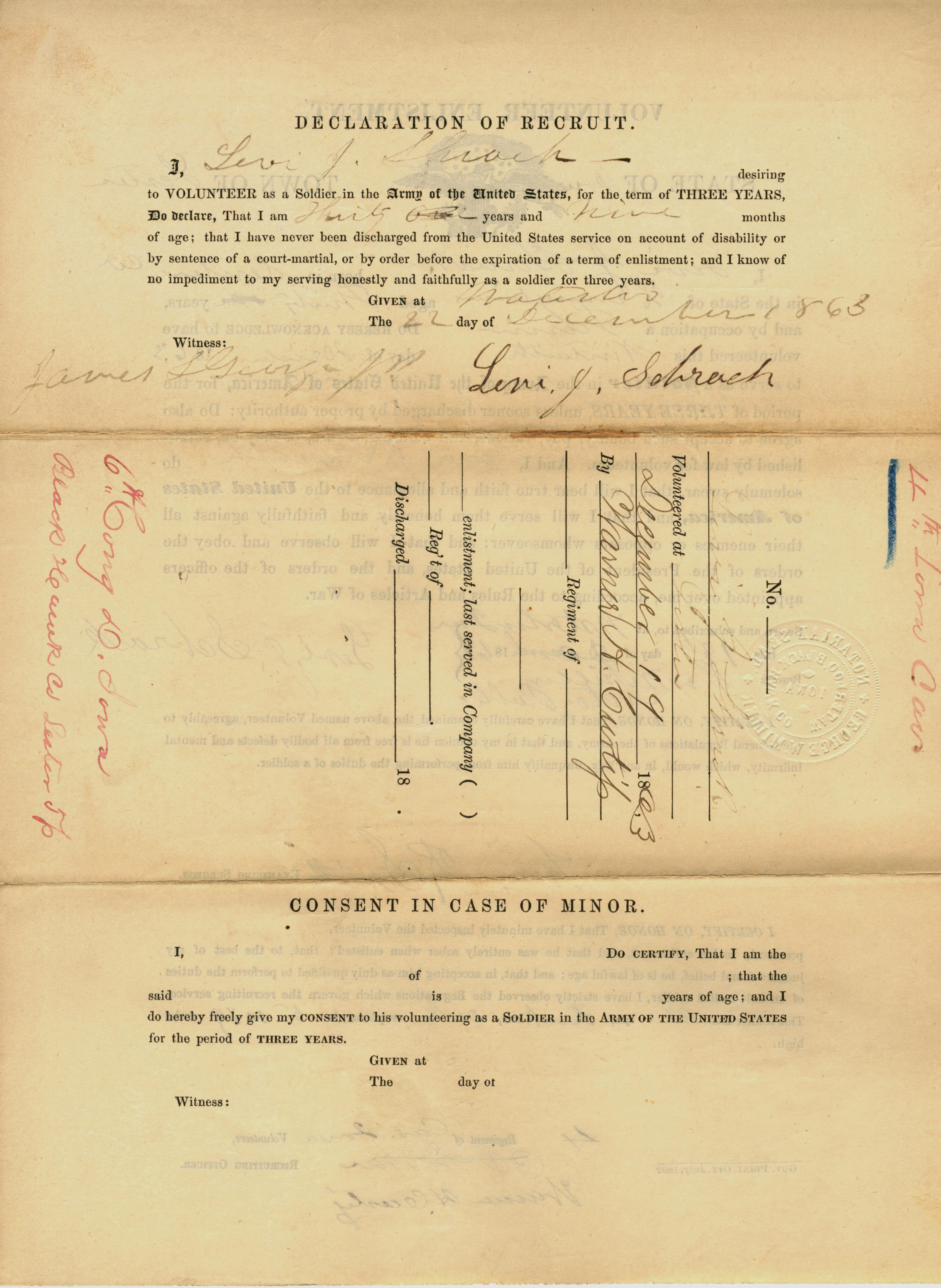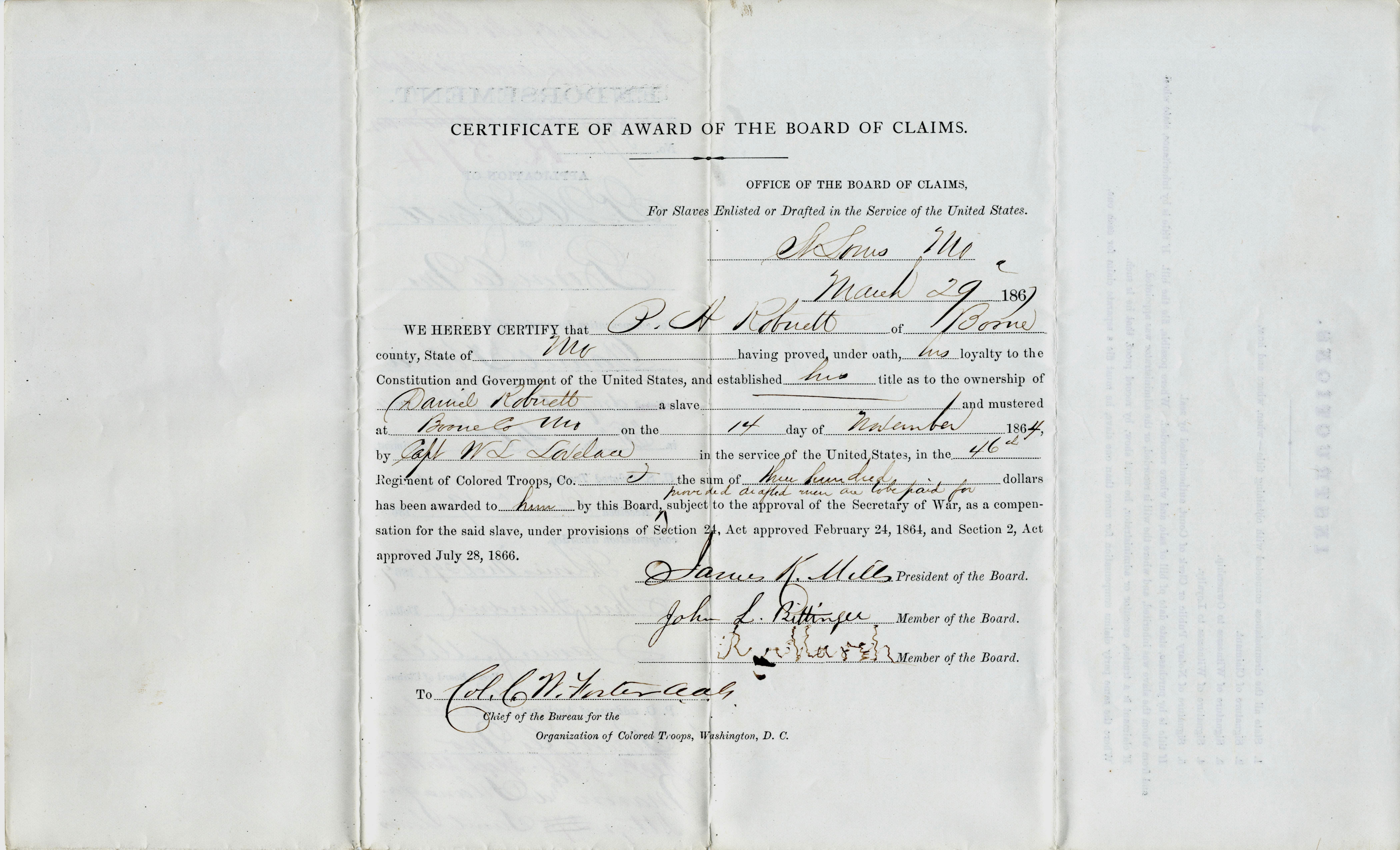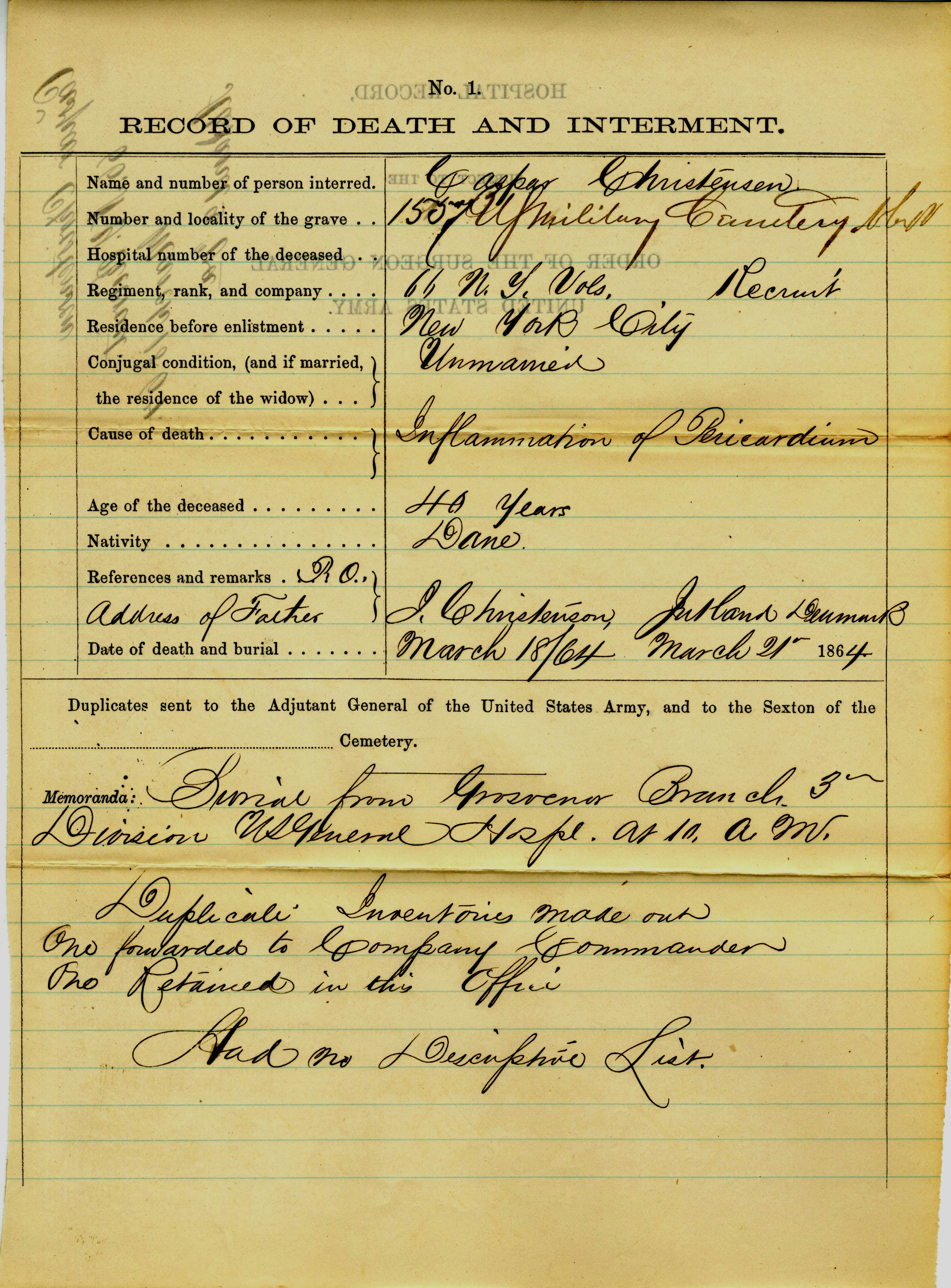Union Army Data - Compiled Military Service Record
The Early Indicators project created three primary data sets: Military, Disease, and Census. The Military data set is a collection of wartime records (Regimental Records, Compiled Military Service Records, and Carded Medical Records) and post-war pension records.
The National Archives and Records Administration in Washington, D.C. holds the Compiled Military Service Records (examples shown below) of the United States Regular Army of officers (1789-1916) and enlisted recruits (1789-1912) during both peacetime and wartime, as well as those of Confederate soldiers and of persons serving during wartime in volunteer units raised by states and mustered into federal service (1775-1903), RG 94.
The CMSR of both volunteer officers and enlisted men serving in wartime normally show the soldier's rank, military organization, and term of service. They also include:
- age at enlistment
- place of enlistment
- place of birth
The CMSR for each recruit consists of an envelope of cards with information about the recruit transcribed by War Department clerks. The clerks transcribed the information on the cards from:
- muster rolls
- descriptive books
- returns (statistical reports submitted to the Adjutant General Office or the War Department by organizations such as hospitals or forts)
- hospital registers, prison records, and other records
Cards are arranged first by war, then by state, then by military unit, and finally alphabetically by the soldier's last name.
The transcription of a soldier's military record into what is known today as a CMSR started soon after the Civil War when Fred C. Ainsworth assumed the duties of Adjutant General. His aim in having the military records transcribed was twofold: first, to preserve the information found on decaying original records, and second, to eliminate the serious backlog of pension applications and rulings by making claim checking easier.
Initially, the cards contained:
- the soldier's name
- rank
- company
- regiment
- whether soldier present or absent with unit in two-month intervals
- the page and volume number from which the information was obtained
Most CMSRs also include information that was added later, including:
- POW records
- casualty information
- hospital register information
- records of desertions
- furloughs
- AWOLs
- MIAs
- copies of enlistment papers
- copies of surgeons' certificates of discharge for disability
- final statements in the case of a soldier's death in service
- inventory of effects
As information from the CMSR was entered into the collection screens (shown below) used by researchers, it was compared with information already collected in the Regimental Record (RR). When the CMSR seriously conflicted with existing information, the researcher attempted to reconcile the previously entered data with the more straightforward CMSR. Military information that came from the CMSR was judged to be more accurate than conflicting information from other records, which may have been retrospective and self-reported.
To view videos on the MSR data collection process, please visit our Youtube channel, or go directly to the MSR collection video.
To download datasets from the Union Army project, please visit the list of data samples.













